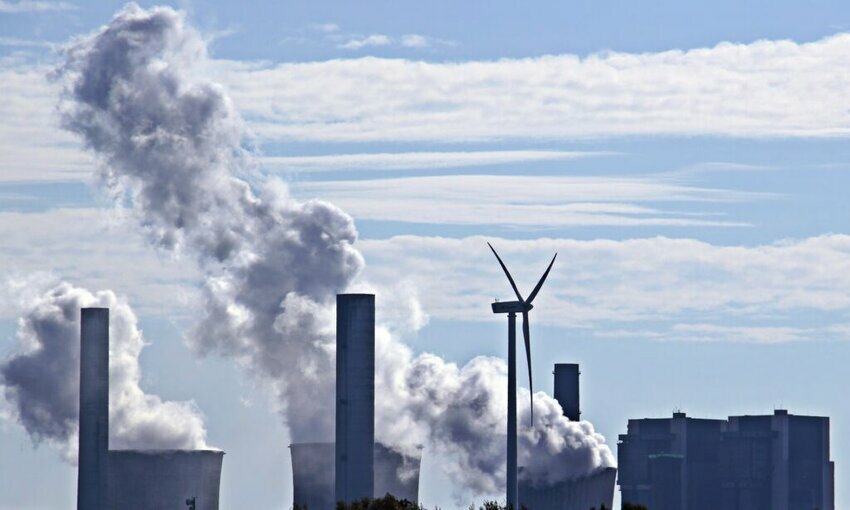 (Credit: Pixabay)
(Credit: Pixabay)No matter how you look at it, coal generation in the United States will decrease. Not only is the regulatory environment for coal a hard one, but utilities are also relying on cleaner burning fuels.
The U.S. Energy Information Administration formulated three scenarios – all showing coal taking a nosedive from its current 20% market share today. The hypotheticals depend on how much the cost of low-carbon technologies falls relative to competing fuels. No matter what, it says fossil fuels – mainly natural gas – will continue to dominate electric generation. It is at 40% now.
“Coal is phasing out,” says Jeff Lyash, chief executive of the Tennessee Valley Authority. “We will shut it down before 2035. We have other technologies that are more cost-effective. We are on track to reduce carbon emissions by 80% by 2035 (from a 2005 baseline). We will be able to reach that reduction without raising prices. I worry less about India and China than our need to invest in developing the right technologies to become commercially available at scale. The U.S. can demonstrate leadership by developing those technologies.”
In the reference case, the coal-fired capacity will fall 64% to 73 gigawatts by 2050. In the lower zero-carbon technology cost scenario, it projects coal to drop by 88% to 23 gigawatts by the midcentury. In the high-cost test case, the EIA assumes the price of such things as solar panels, wind turbines, and battery storage remains flat – unlikely because of proactive public policies like the Inflation Reduction Act. Compared with the reference case, coal will decline by about 40% by 2050.
In other words, coal provides 5% of the electric portfolio, while wind and solar make up 55% in the reference case. In the low-cost tech example, coal supplies just 1% of the electricity while wind and solar provide 69%. In the high-cost scenario, coal makes up 8%, and wind and solar deliver 40%.
“The coal-fired generation in all three cases comes from the newer, more efficient coal-fired power plants that will remain online because they can provide lower-cost, dispatchable power to the grid,” the study said.
A critical pathway to net zero by 2050 is to electrify global economies – a move away from high-intensity carbon sources and toward zero-carbon fuels: more wind and solar, along with long-term storage. It also means commercializing advanced nuclear energy.
The United States has reduced its annual energy-related carbon emissions by 14% since 2005, even as the U.S. economy grew by 28%. Falling wind and solar prices have made that possible. So has energy storage and the shift from coal to natural gas. The technologies to cut carbon levels by 80% by 2030 are here now. But the real challenge is to get the rest of the way by 2050.
The goal is to keep temperature increases from rising more than 1.5 degrees Celsius or 2.7 degrees Fahrenheit from pre-industrial levels. An earlier global climate agreement had the world’s wealthiest nations paying $100 billion annually from 2019 to 2025. The money would go to buying the latest and most remarkable technologies to achieve success.
Take Duke Energy: nuclear energy is providing a sizable share of the utility’s carbon-free power, and so is solar. Duke has a storage facility that “pairs nicely” with its solar farms. The company says natural gas will keep playing an essential part, adding it is gradually electrifying its transportation fleet. As such, the utility implements “time-of-use” rates to control peak usage.
Meantime, Xcel Energy’s goal is to be carbon neutral by 2050. Wind power is not just its most significant contributor but also the company’s least expensive option. The utility expects renewables to fuel 60% of its electric generation by 2030, and natural gas will back it up. It is preserving its nuclear fleet.
Edison International is another utility aiming high — part of California’s regulatory effort to limit CO2 releases. The state seeks to reduce CO2 emissions from 1990 levels by 40% by 2030 and be net zero by 2045. It also wants to phase out the sale of gas-powered cars and trucks by 2035.
“The most affordable way to get to net zero by 2045 is through renewables ... and minimal use of fossil fuels,” says Pedro Pizarro, chief executive of Edison International. “Across California, adding 80 gigawatts of renewables and 30 gigawatts of bulk power storage ... would require something like $175 billion ... between now and 2045, plus another $70 billion or so of investment on the grid side to make sure the grid can manage all that.”
The EIA study – and the ensuing discussion – comes before the climate negotiators plot a path to 2030 and beyond. The reality is that countries and companies will come up short of net zero, although it is still doable – made possible because of some proactive utilities and public policies.